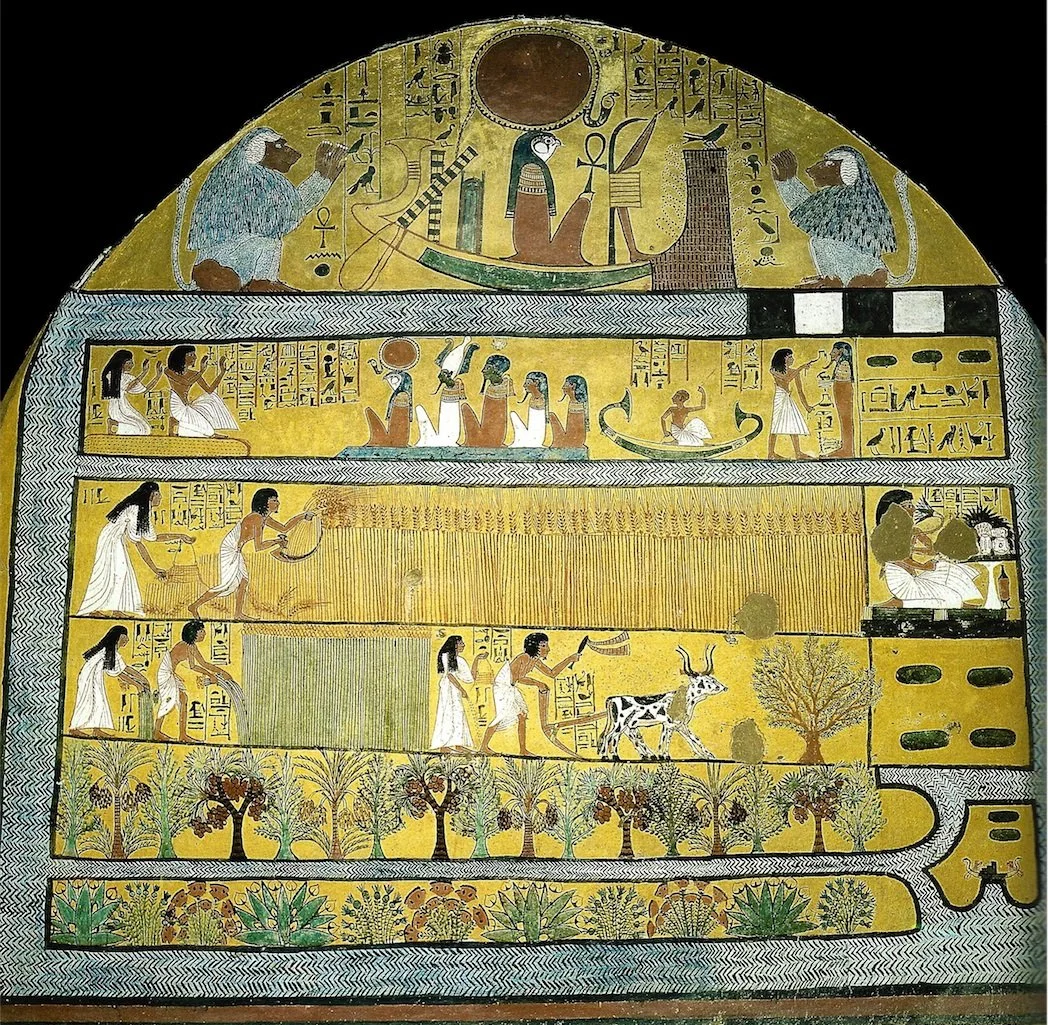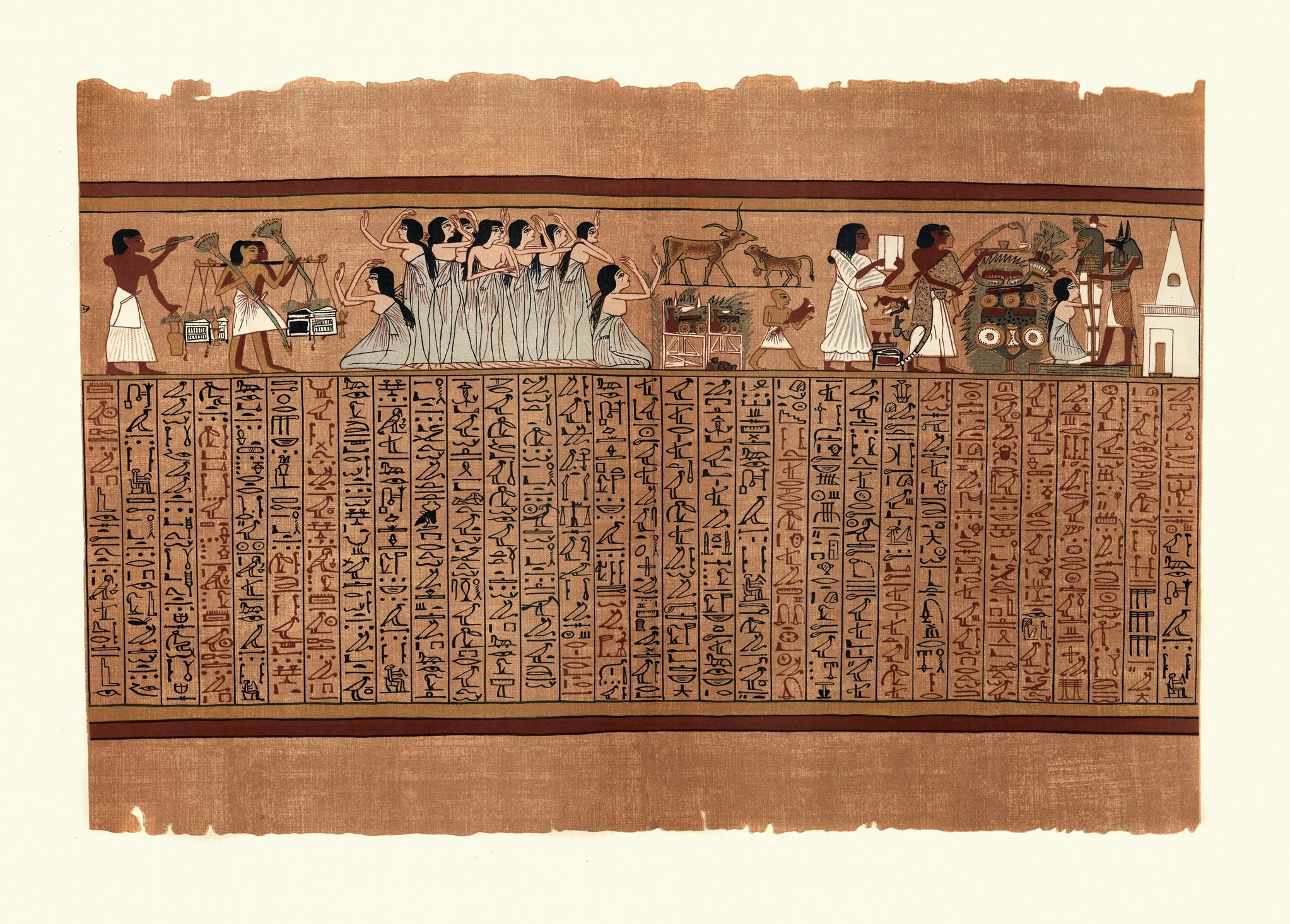So, You Want to Get to Heaven? What to Know about Ancient Egyptian Spiritual Life
Today, we're diving into one of the most fascinating topics ever—ancient Egyptian beliefs about the afterlife! Get ready to journey back in time as we explore how the Egyptians envisioned life after death.
Spoiler alert: they were pretty serious about preparing for the great beyond, and it's way more intriguing than just “Rest in Peace.” We’re talking magical texts, judgment ceremonies, and an eternal paradise called the Field of Reeds. So grab your metaphorical fedora, and let’s take this journey together!
A famous quote attributed to Galileo points out that religion and science work in opposition – the first looking at “how to go to heaven” while the second focuses on “how the heavens go.” This is something to keep in mind when looking at the spiritual beliefs and practices of Ancient Egyptians.
Long held as a remarkably advanced society, with a history stretching over more than 30 millennia, the Ancient Egyptians were a lot LESS scientifically focused than many might realize.
We know them as astronomers, architects, physicians, politicians, and all-around great planners. This makes us think of them as extremely scholarly folks. And while there is something to be said of their astonishing achievements, they were not focused on the “why” of the world around them. Instead, they made use of what they had discovered or learned but did not advance or delve deeper into the possibilities of these tools.
The “golden ratio,” is a great example of this. The ancient Egyptians “found that these ratios were useful in constructing monuments. There is scant evidence that they cared about or recognized the theoretical implications of the golden ratio.” (Strom, 2019)
Rather, much of their daily lives looked at what came after life ended. Focus on the afterlife in ancient Egyptian culture was not just about death, though, but was a continuous and pervasive aspect of living. Their entire society was deeply invested in the idea of continuity beyond death, where much of daily life was a preparation for eternity.
So, when it comes to ancient Egypt, the afterlife wasn’t just an abstract concept—it was the destination everyone was aiming for! Imagine living your life knowing that everything you do is preparation for the next, eternal chapter. The Egyptians believed that when you died, it wasn’t the end. Oh no, it was just the beginning of an epic adventure, one that involved navigating an underworld full of challenges, rituals, and even a bit of judgment.
The Field of Reeds offer a pretty fine eternity.
Life After Death—The Egyptian Style
The ancient Egyptians were all about balance, and their entire journey into the afterlife was governed by the concept of Ma’at. Now, Ma’at wasn’t just some vague idea—it was the divine principle of truth, balance, harmony, and cosmic order. It’s like the universe's "rulebook," and sticking to it was the key to a smooth ride into the afterlife.
Getting to heaven, in their time, meant a civilization profoundly invested in achieving eternal life. Lucky for us, they left many explanations of just how to do that in key texts that would guide the soul to a coveted place in the “Field of Reeds.” A huge thing to recognize here, though, is that Ancient Egyptians only wanted more of a good thing. They loved the world around them and longed to remain in something just like it when transitioning from the realm of the living to whatever followed.
The Ancient Egyptians were in love with the natural world, the seasons, and everything to do with living. You see it in everything that remains of their time. Their idea of heaven was something a lot like Life 2.0 and not at all like walking amongst clouds and angels.
But where exactly were they headed, you ask? Enter the Field of Reeds. Think of it as a mirror image of the world they lived in but with all the perks—eternal harvests, an endless supply of food, and, best of all, no taxes! The goal was to reach this blissful realm and reunite with loved ones, as well as continue enjoying the best things life had to offer (only without the pesky inconveniences of everyday mortal existence).
And your judges include Osiris shown here with his sister-wife Isis.
The Journey Through the Afterlife: It’s a Quest!
So, how did one actually get to this glorious paradise? The journey began with death, but what followed was an intense, mystical adventure through the underworld, known as the Duat. The Duat wasn’t a stroll in the park. Oh no, it was filled with dangers, challenges, and even some terrifying monsters! The goal was to make it through this underworld maze to reach the judgment hall of Osiris, the god of the afterlife.
Here’s where things get really interesting. Once you reached the Hall of Two Truths, your heart was weighed against the feather of Ma’at. Yep, that’s right—an actual feather! This wasn’t some “light-hearted” activity, though. If your heart was as light as the feather, congratulations! You were deemed worthy of entering the Field of Reeds. But if your heart was heavy with sin? Well, let’s just say you'd be meeting a creature named Ammit—a fearsome beast with the head of a crocodile, the body of a lion, and the hindquarters of a hippopotamus—who would devour your heart and end your journey right then and there.
Anubis supports the mummy in this depiction of an ancient funeral
The Preparation: You Didn’t Just Wing It!
Modern Western ideals of the afterlife are radically different from those held by the Ancient Egyptians. They viewed death not as an end but as a transition to another phase of existence. Theirs was a dualistic view of the soul, with the “ka” and “ba” providing the life force and personality. They also considered the “akh” or transformed spirit when planning for the afterlife. Each of these parts played very distinct roles in the journey, with the goal for the dead to be reborn into the afterlife.
As noted, the afterlife was given a specific name by the Ancient Egyptians – Aaru, or the Field of Reeds. However, only those deemed worthy would reach Aaru. To do so required living along specific guidelines, AND dying along them, too.
This belief in a perfected continuation of life influenced every aspect of Egyptian culture, from the construction of elaborate tombs to the intricate funerary rites aimed at ensuring the soul's safe passage and acceptance in the afterlife. Thus, mummification enters the discussion as this preserves a body and allows key rituals to be performed. But preparing for the afterlife was about a lot more than preserving the physical body.
How are we so sure, thousands of years later, that this is how the Ancient Egyptians felt? We read about it in some key texts preserved on tomb walls, sarcophagi, and some papyrus scrolls. The key was preparation. They took afterlife prep very seriously. I mean, have you seen the pyramids? These massive structures weren’t just built to look impressive—they were designed to house everything a person might need in the afterlife, from golden treasures to their favorite snacks.
And let’s not forget about the Book of the Dead. This wasn’t an actual “book” like we know today but rather a collection of magical spells and instructions that were meant to help guide the deceased through the underworld. It was basically the ultimate cheat sheet for getting through the afterlife! The wealthy had entire chapters written on papyrus and placed in their tombs, while others had smaller excerpts or even paintings of the spells on their coffin walls. They didn’t want to take any chances, after all!
And here’s a fun fact: the Egyptians believed that even though you’d made it to the afterlife, you still needed sustenance! That’s why they left offerings of food, drink, and even clothing in tombs to keep their loved ones well-fed and comfortable in their new eternal home.
What Can We Learn from the Ancient Egyptians?
It’s clear that the ancient Egyptians took their afterlife seriously—probably more seriously than we take our day-to-day lives! Their focus on preparing for the journey to the afterlife teaches us a lot about their worldview, values, and sense of purpose. It also shows us that the idea of life continuing beyond death was a major driving force behind so many aspects of their culture, from the grand architecture of their tombs to the intricate rituals that filled their everyday lives.
So, the next time you think about ancient Egypt, remember that every pyramid, every tomb painting, and every little amulet was part of a much larger, more epic story—a story about the journey to eternity and the quest to live forever in the Field of Reeds.
Wrapping It Up
If you’ve made it this far, congratulations—you’ve officially taken your first step on your own journey into the fascinating world of ancient Egyptian beliefs! And guess what? There’s so much more to uncover. Stay tuned as we delve even deeper into the magical, mysterious, and downright captivating world of ancient Egypt.
And if you’re as excited as I am about this amazing adventure, why not make it a reality? With Kemet Spiritual Journeys, you can start planning a visit to Egypt that's fully customizable to your wishes and interests. Whether you want to explore the grand pyramids, walk through the ancient temples, or dive into the mysteries of the afterlife, we’ll help you craft an unforgettable experience tailored just for you! Check out kemetspiritualjourneys.com to begin your journey into the heart of ancient Egypt. 🌟
Visit Kemet Spiritual Journeys now and let your adventure begin!
Up next? Read All About It: The Book of the Dead, Pyramid Texts, and Coffin Texts




